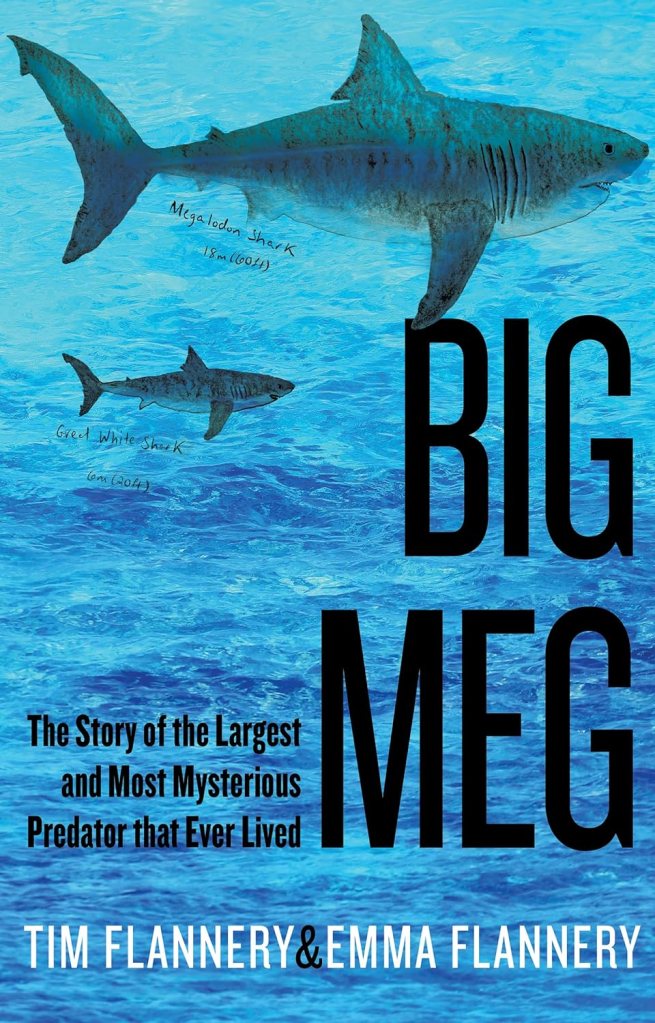by Richard Conniff/The Wall Street Journal
Megalodon lived. Past tense. The largest shark ever, and arguably the largest predator, went extinct 2.6 million or more years ago. And it has stayed that way. But Hollywood sequel makers will be pleased to know that megalodon still somehow manages to kill on average two people a year, according to Tim and Emma Flannery. More on that later.
In “Big Meg: The Story of the Largest and Most Mysterious Predator That Ever Lived,” the Flannerys, a father-and-daughter pair of Australian scientists, provide a more complete and accurate picture of megalodon than you are likely to see on any television or movie screen. The authors tell us, among other things, that megalodon had nurseries in parts of what are now Maryland, South Carolina and Florida; that it was warm-blooded; and that its young were more than 6 feet long at birth. Like some modern sharks, but on a grander scale, megalodon practiced intrauterine cannibalism, and only the strong emerged to see the outside world. The adult megalodon, the Flannerys write, was big enough to be the scourge of the seas and an “emblem of all the unspoken, hidden terrors that haunt our imaginations.”
Just how big? Was it 50 feet long? Or maybe 65? The book is vague on such details for good reason. Not only does megalodon not exist in the modern world; there is also hardly any fossil evidence, apart from its teeth, that it ever existed. Megalodon’s massive body was built on cartilage, not bone, and cartilage does not fossilize well. The Flannerys hold out hope that a “whole-body” megalodon fossil might someday turn up, a result of extraordinary circumstances of preservation. It happened in 2017 for a contemporary, the giant mackerel shark, an extinct ancestor of today’s great white shark. But the lack so far of anything comparable for megalodon means that the Flannerys must often resort to “mights,” “maybes” and “just imagines.”
About megalodon teeth, their account is sharply detailed. Megalodon’s mouth contained about 272 of them, arranged in four rows, rotating forward as the front teeth broke off in heavy use. And heavy use is what they got. Whales were their common prey, according to the Flannerys, and megalodon’s mouth was big enough “to swallow an orca whole.” Biting and shaking its way through such massive prey, a single shark could shed tens of thousands of teeth over its centurylong life. Unlike its cartilaginous skeleton, its arrowhead-shaped teeth were made of unusually hard material and remain scattered abundantly across the planet.








